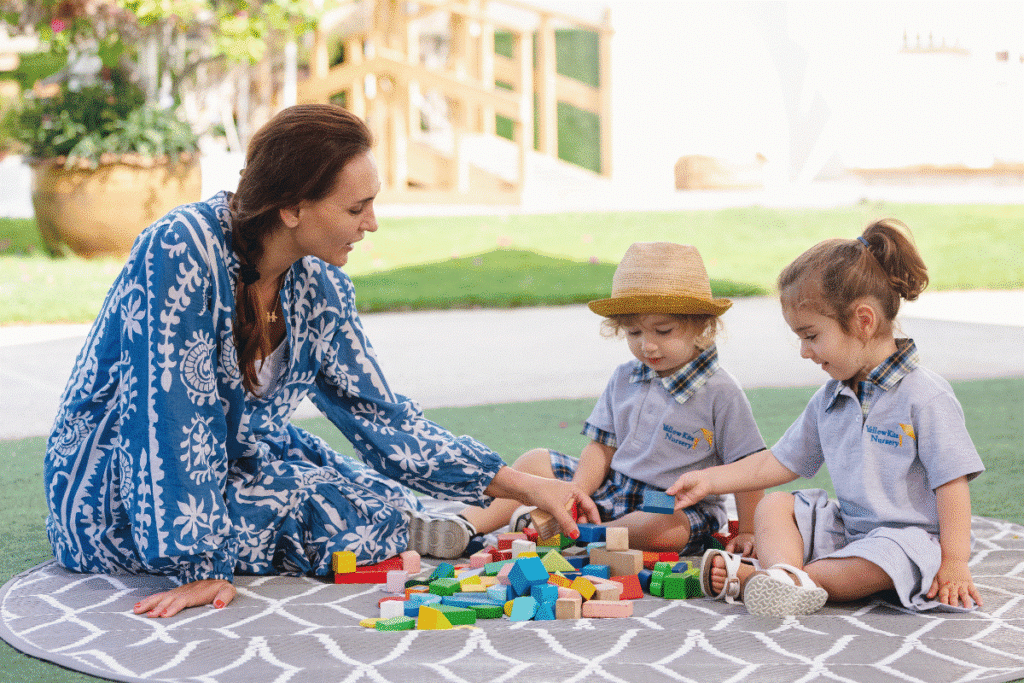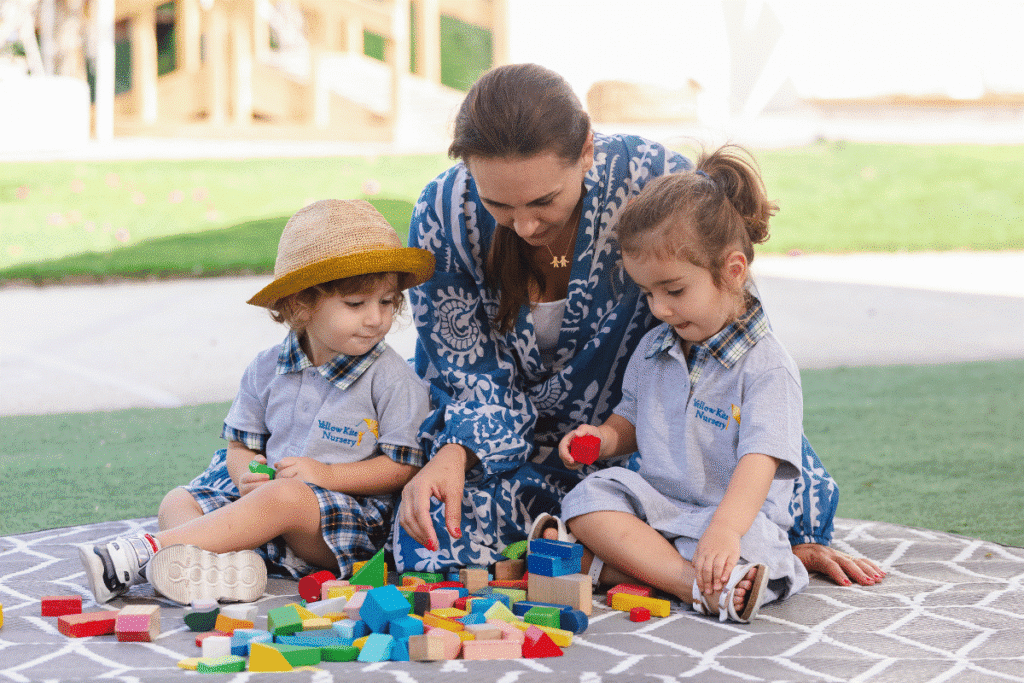For many parents and teachers, the words “tidy-up time” bring to mind chaos, stress, and a lot of adult voices calling, “Come on, hurry up!” But what if tidy-up time didn’t have to be a battle?
At Yellow Kite Nursery, we believe even tidying up can be a learning moment — one that’s respectful, calm, and rooted in the Curiosity Approach. Children deserve to feel like participants in their environment, not workers ordered to clean it up at top speed. When we slow down and respect the process, tidy-up time becomes just as valuable as play.

Why Respect Matters During Tidy-Up
Children are still learning about responsibility and order. For them, tidying up isn’t about “finishing the job quickly” — it’s about understanding their place in a community and caring for shared resources.
When tidy-up time is rushed:
- Children feel overwhelmed and pressured.
- They may associate tidying with stress instead of responsibility.
- The chance for learning and reflection is lost.
When tidy-up time is respectful:
- Children develop ownership over their space.
- They learn practical life skills like sorting and categorising.
- They see themselves as capable and valued contributors.
This philosophy aligns closely with principles found in a Waldorf nursery, where everyday activities like tidying are viewed as meaningful rituals that build independence and reverence for one’s environment.
More Than Just Cleaning
It’s easy to see tidy-up as the “boring bit” before the fun starts again. But in reality, it’s full of learning opportunities.
Through tidy-up time, children are developing:
- Problem-solving skills: Where does this piece belong?
- Collaboration: How do we work together to get it done?
- Memory and sequencing: Remembering where items live and following steps.
- Emotional intelligence: Understanding why we care for our space and respect shared resources.
When adults view tidy-up time through this lens, it shifts from being a chore to being an extension of play and learning.
What We Do at Yellow Kite Nursery
In our classrooms, we don’t sweep through and “do it for the children.” We involve them. We talk about why we’re tidying. We model respect for the resources and the environment. And importantly, we give children enough time.
For example:
- Instead of saying, “Quickly, put that away!” we might say, “I wonder where this puzzle piece belongs?”
- Instead of tidying up while children are distracted, we invite them into the process, so they see their role in the bigger picture.
- We use songs, rituals, and gentle prompts to make the process predictable and positive.
This approach teaches that tidying is not punishment — it’s part of belonging to a community.
Actionable Tips for Parents at Home
Tidy-up time at home can often be the biggest trigger for frustration. Here’s how you can make it smoother and more respectful:
- Set clear expectations: Make tidying a normal part of play, not an afterthought.
- Model it: Children copy what they see. If they see you tidying with care, they’ll join in.
- Make it predictable: Use a song, countdown, or visual signal so your child knows tidy-up time is coming.
- Break it down: Give simple instructions like, “Let’s put the cars in the basket first,” rather than overwhelming them with, “Clean up everything!”
- Celebrate effort, not speed: Focus on participation and care, not how quickly it’s done.
Actionable Tips for Teachers
In the nursery setting, tidy-up can either be the most stressful part of the day or a calm transition. These small shifts make all the difference:
- Allow enough time: Build tidy-up into your routine so it isn’t rushed before the next activity.
- Use language of respect: Say “Let’s take care of our space” instead of “Clean up now.”
- Involve children in decisions: Ask, “Where should this live so we can find it next time?”
- Make it playful: Turn it into a matching game, a race (only if fun, not stressful), or a sorting challenge.
- Acknowledge their contribution: Thank children for helping care for the classroom. This builds pride and a sense of belonging.
Many educators who have worked in or alongside a Waldorf nursery will recognize these rhythmic, intentional approaches to daily transitions — they honor the child’s need for predictability and meaning in every moment.
Why Rushing Undermines Learning
Rushing tidy-up time might seem efficient in the short term, but it undermines the bigger picture. When children are hurried, they lose the chance to:
- Practice problem-solving.
- Develop responsibility and ownership.
- Connect their actions to the care of their environment.
By slowing down, we give children time to notice, reflect, and contribute in a meaningful way.
Shifting Our Mindset
As adults, we often see tidying as a chore to “get through.” But for children, everything is learning. When we respect the process, tidy-up time becomes:
- A lesson in care and responsibility.
- A moment of collaboration and community.
- An opportunity to show children their role in the bigger picture.
It’s not about getting it done quickly. It’s about making children feel valued in their environment.

Final Thought
At Yellow Kite Nursery, we believe tidy-up time should never be rushed. It’s not just about putting toys away — it’s about teaching respect, responsibility, and belonging. By slowing down and involving children in the process, we turn an everyday task into a moment of growth.
Whether you follow the Curiosity Approach, principles from a Waldorf nursery, or your own family rhythm, the key is the same: respect the child, honor the process, and recognize that even the simplest moments hold profound learning.
So next time you’re tempted to hurry your child through tidy-up time, pause and remember: the goal isn’t speed. The goal is learning.
How does tidy-up time feel in your home? Stressful or calm? What small change could make it more respectful?

